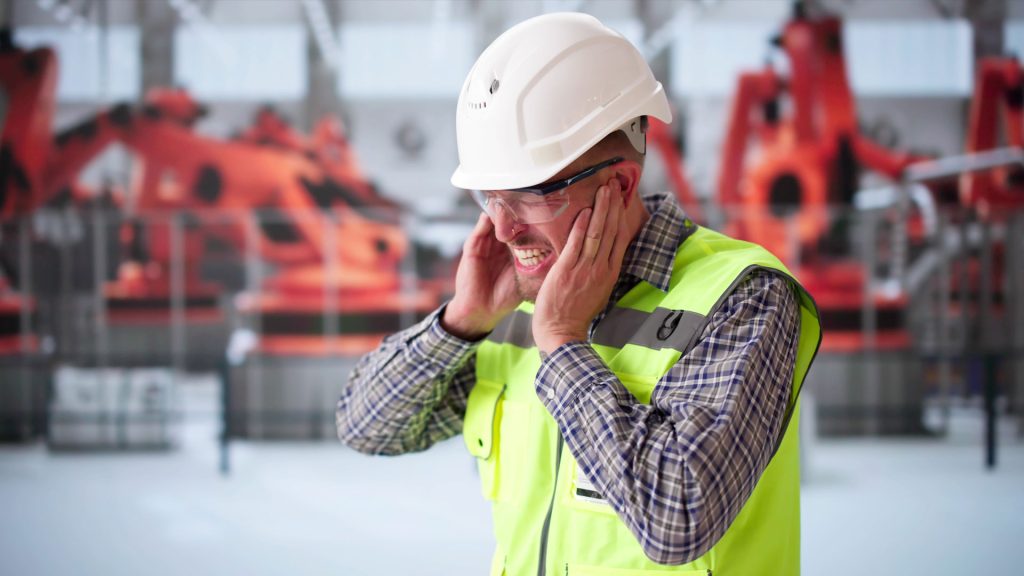
Understanding the causes and impact of NIHL, and how to prevent it.
Noise-induced hearing Loss (NIHL) is hearing loss caused by exposure to a harmful level of noise. In the UK alone, NIHL caused by exposure to occupational noise (noise at work) affects over two million workers. Globally, a staggering 1.1 billion people are estimated to have the condition, with 16% of disabling hearing loss worldwide being attributed to exposure to occupational noise. Workers in industries such as manufacturing, mining, and construction are at particularly high risk of experiencing NIHL, which is a permanent and disabling condition.
In sum: nearly one-fifth of the world’s population stands to lose a combined 4 Million years of life (or quality of life) as a direct result of exposure to unsafe levels of sound in the workplace.
What causes or contributes to NIHL?
At work, NIHL is caused by exposure to harmful levels of noise in the workplace. Common sources of noise include powered hand tools, chainsaws, compressed air, and other heavy machinery and industrial equipment. Exposure to noise from sources like these can lead to NIHL.
Hearing loss often occurs gradually, making it difficult to detect until hearing loss is already problematic, and irreversible.
NIHL is hearing loss caused by exposure to harmful levels of noise. But there are other factors that might contribute to – or accelerate – hearing loss that employers and safety managers should be aware of.
Shift work and workload are two factors that might contribute to hearing loss due to the physical and mental strain they put on workers. But NIHL can also be accelerated or compounded when a worker is exposed to other sources of risk, like vibration, which have been proven to directly impact hearing loss.
How does NIHL impact workers, employers, and the economy?
NIHL due to occupational noise is often cumulative, meaning it gets worse over time. As a result, workers may not realise that they are having trouble hearing due to how gradually the condition sets in. This means that many workers don’t know they have NIHL until it’s too late: At this point, the symptoms and consequences can be far-reaching.
The connection between hearing loss and negative health outcomes is so profound that hearing loss is categorised as the fourth-leading cause of disability worldwide
In the UK alone, the overall impact of hearing loss on the economy – including lost wages, healthcare, and rehabilitation – has been estimated at an absolutely astonishing £25 billion. In light of these figures, and the debilitating impact of hearing loss on individuals and society, it’s clear that better solutions for combatting NIHL are urgently needed.
How can I prevent NIHL?
It’s important to note that NIHL is preventable. Employers need not view noise monitoring in the workplace as merely mitigating a known issue. On the contrary, a more proactive approach to noise monitoring helps employers address the issue of noise in the workplace before it leads to negative health outcomes for workers.
In the UK, employers are duty-bound to protect their workers from exposure to unsafe levels of noise. The Control of Noise at Work Regulations 2005 lays out the specific responsibilities that employers have when it comes to monitoring and managing their noise environment.
In light of the current landscape with regards to NIHL and noise in the workplace – which includes higher rates of NIHL-related claims against employers, thousands of new NIHL cases reported every year, and millions of affected workers – it’s clear that traditional assessments aren’t doing enough to effectively combat NIHL due to occupational noise.
Smart Alert by Noise Smart:
Smart Alert by Noise Smart is a purpose-built solution for better overall sound monitoring in the workplace. Lightweight and easy to use, it was created to fully prevent exposure to unsafe levels of sound by alerting workers, in real-time, to unsafe conditions. Using cutting-edge, industry-defining technology, Smart Alert continuously measures a workers’ exposure to noise from inside the ear. Unlike traditional noise assessments, Smart Alert measures the amount of noise that a worker is actually exposed to, it doesn’t estimate exposure based on a calculation of average noise levels in a workplace.
With this insight available in an attractive, dashboard-style format, your team can easily and quickly identify problem areas and hotspots, patterns and trends, and more. And since NIHL doesn’t exist in a vacuum, this additional context is mission critical when it comes to driving better health outcomes for workers. For example: with the insights you’ll get from Smart Alert, you might be able to identify that certain shift workers are experiencing higher levels of noise exposure than other employees. Or, you may be able to overlay your data from Smart Alert with information you have about your workers’ exposure to risk from other sources, like vibration.
Reducing the instance of NIHL due to occupational noise starts with improved noise monitoring in the workplace.




